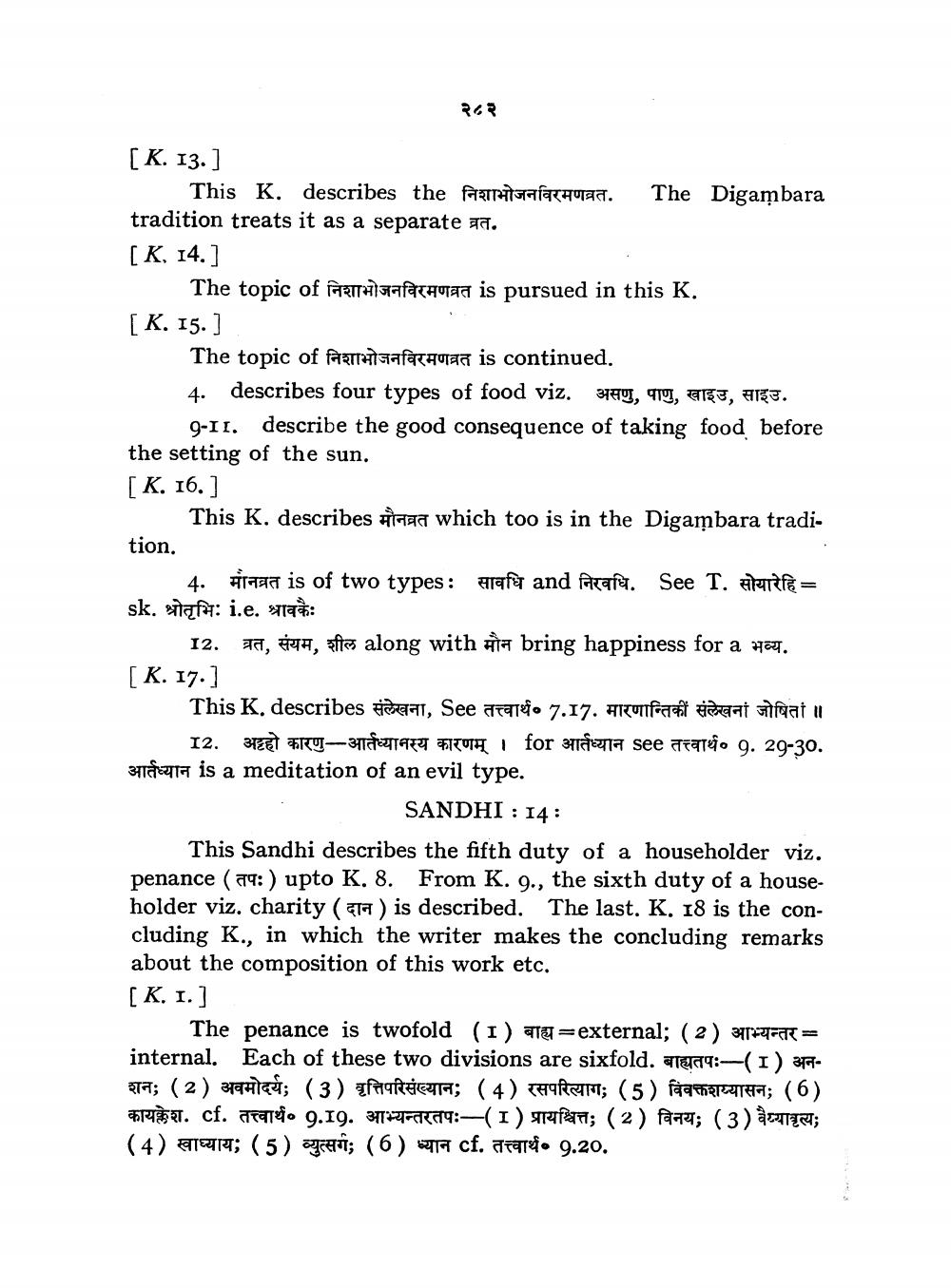________________
२८३
[K. 13.]
This K. describes the निशाभोजनविरमणव्रत. The Digambara tradition treats it as a separate व्रत. [K, 14.]
The topic of निशाभोजनविरमणव्रत is pursued in this K. [K. 15.]
The topic of निशाभोजनविरमणव्रत is continued. 4. describes four types of food viz. असणु, पाणु, खाइउ, साइउ.
9-11. describe the good consequence of taking food before the setting of the sun. [K. 16.]
This K. describes Afia which too is in the Digambara tradition.
4. मौनव्रत is of two types: सावधि and निरवधि. See T. सोयारेहि = sk. श्रोतृभिः i.e. श्रावकैः
12. व्रत, संयम, शील along with मौन bring happiness for a भव्य. [K. I7.]
This K.describes संलेखना, See तत्त्वार्थ. 7.17. मारणान्तिकी संलेखनां जोषितां ॥
12. अहो कारणु-आर्तध्यानस्य कारणम् । for आर्तध्यान see तत्त्वार्थ० 9. 29-30. आर्तध्यान is a meditation of an evil type.
SANDHI : 14: This Sandhi describes the fifth duty of a householder viz. penance (तपः) upto K. 8. From K. 9., the sixth duty of a householder viz. charity (दान) is described. The last. K. 18 is the concluding K., in which the writer makes the concluding remarks about the composition of this work etc. [K. I.]
__ The penance is twofold (1) बाह्य =external; (2) आभ्यन्तर = internal. Each of these two divisions are sixfold. बाह्यतपः-(1) अनशन; (2) अवमोदर्य; (3) वृत्तिपरिसंख्यान; (4) रसपरित्याग; (5) विवक्तशय्यासन; (6) कायक्लेश. cf. तत्त्वार्थ. 9.19. आभ्यन्तरतपः-(I)प्रायश्चित्त; (2) विनय; (3) वैय्यावृत्य; (4) खाघ्याय; (5) व्युत्सर्गः (6) ध्यान cf. तत्त्वार्थ• 9.20.




